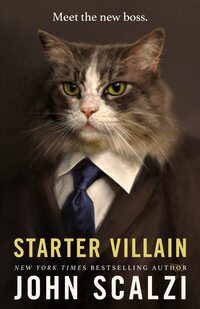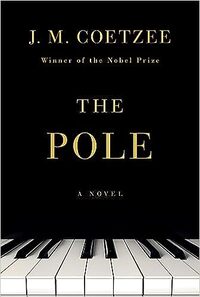The Caretaker by Ron Rash
 Wednesday, September 20, 2023 at 6:58AM
Wednesday, September 20, 2023 at 6:58AM 
Published by Doubleday on September 26, 2023
The Caretaker is an unconventional story of love and loss. It combines a domestic drama with a war story, yet the loss is occasioned by lies rather than battlefield violence.
After their two daughters died, Daniel and Cora Hampton should have been kind to their son Jacob despite his instinct to rebel against their controlling nature. Instead, they disinherited him after he eloped with Naomi Clarke, a 16-year-old hotel maid. Naomi did not satisfy their small town standards of propriety.
After Naomi became pregnant, Jacob was drafted and sent to Korea. Jacob’s parents refused to look after Naomi so the task fell to Jacob’s friend Blackburn Gant, the caretaker at the local cemetery. Jacob and Naomi live in North Carolina but, after a confrontation with Daniel while Jacob is still in Korea, Naomi returns to her parents’ home in Tennessee to give birth.
Ron Rash takes the time to develop detailed backstories for the central characters. They all suffer from poor parenting. We learn how Blackburn’s parents disregarded his polio symptoms and made him work in the fields until he fell, clenching the soil with his fists for an hour, barely able to breathe until his father found him. He can walk with a bit of a limp but his facial muscles droop. Rash conveys Blackburn’s feeling of helplessness as he is stricken, followed his sense of shame at his appearance.
Naomi’s parents wanted her to marry a man who would help them with their farm. They made her drop out of school in third grade and were distressed when she left home to work in a motel. Naomi is sympathetic because, despite having little control over her life, she perseveres.
Daniel and Cora wanted Jacob to finish college and take over the family store. We see Jacob thriving at manual labor in the family sawmill because his father thought he would gladly return to college after spending the summer performing grueling work. Daniel didn’t understand that Jacob preferred work that tired his body, not his mind. He was made foreman before the end of the summer.
This is a story of parents who don’t listen to their children, who expect them to accept a dictated path rather than making their own lives, who treat children as property. It is ultimately a story of parental selfishness. When we think of evil people, we think of violence. Daniel and Cora Hampton do not behave violently but they are the personification of evil. Naomi’s parents are little better.
Jacob sees and causes death in the war. Rash describes Jacob’s most traumatic war moment in vivid detail. Jacob survives his wounds and holds on in anticipation of reuniting with Naomi and his child when he comes home. Losing that opportunity convinces him that he has lost everything. Naomi’s sister remarks that “the heart’s full knowing came only with loss.” Jacob wonders whether love is strongest after it can no longer be shared.
This review has danced around the plot. It’s impossible to explain why The Caretaker is so good without giving away the surprise that drives the story. To avoid saying too much, I can only reveal that Jacob, Naomi, and Blackburn are all devastated by a scheme that serves only the selfish interests of Daniel and Cora. Naomi’s father becomes an accomplice to the scheme when he learns of it.
The story seems to move toward an inevitable climax yet when the moment arrives, it takes a sharp turn, one that is foreshadowed yet (at least to me) unexpected. The novel’s final moments offer Blackburn a difficult choice, one that invites him to be just as selfish as the worst characters yet a choice that, in the logic of the novel, might serve everyone by setting multiple lives on a better course. What choice will Blackburn make? This is the kind of novel that invites readers to think about the choice that they would make. From strong characterization to an original plot to searing moments of drama, The Caretaker is one of the best books I’ve read this year.
RECOMMENDED



